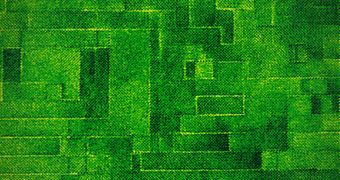An international group of experts announces the development of a new class of nanostructured materials, to be used for the creation of advanced communication devices, including smartphones. The new family of multilayer crystalline sandwiches will be especially well suited for microwave and advanced communication devices.
The work was conducted by scientists at the US National Institutes of Standards and Technology (NIST). The team included experts from the Cornell University, the University of Maryland, Pennsylvania State University, and the Oak Ridge National Laboratory, among others.
The group was able not only to engineer the new family of materials, but also to measure their properties, and calculate the potential implications of their achievement. Experts believe that their research may set the base for the development of high-performance, compact components for a wide array of electronic devices.
Components based on multilayer crystalline sandwiches (MCS) would consume less energy than their existing counterparts, leading to a reduction in operating and purchase costs for any devices that will include them. The MCS are part of group of materials called tunable dielectrics.
Dielectrics play important roles in devices including smartphones, tablets and laptops, as they allow these devices to tune in on a specific radio or microwave frequency out of a variety of choices.
“These materials are an excellent example of what the Materials Genome Initiative refers to as ‘materials-by-design,’” explains James Booth, a lead research on the study and a physicist at NIST.
“Materials science is getting better and better at engineering complex structures at an atomic scale to create materials with previously unheard-of properties,” Booth adds. Details of the study were published in a recent issue of the top scientific journal Nature.
One of the most important features MCS display is an ability to correct its own internal structure. Existing dielectrics feature materials whose atoms are not always perfectly arranged, leading to the formation of gaps. MCS correct these flaws even as they operate.
“When it's being grown, one portion accommodates defects without affecting the good parts of the crystal. It's able to correct itself and create perfect dielectric bricks that result in the rare combination of high tuning and low loss,” concludes Nathan Orloff, a materials scientist at NIST.

 14 DAY TRIAL //
14 DAY TRIAL //